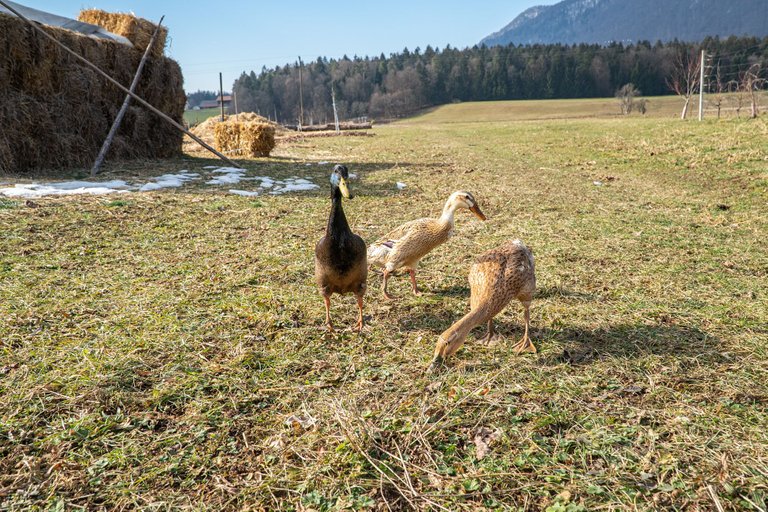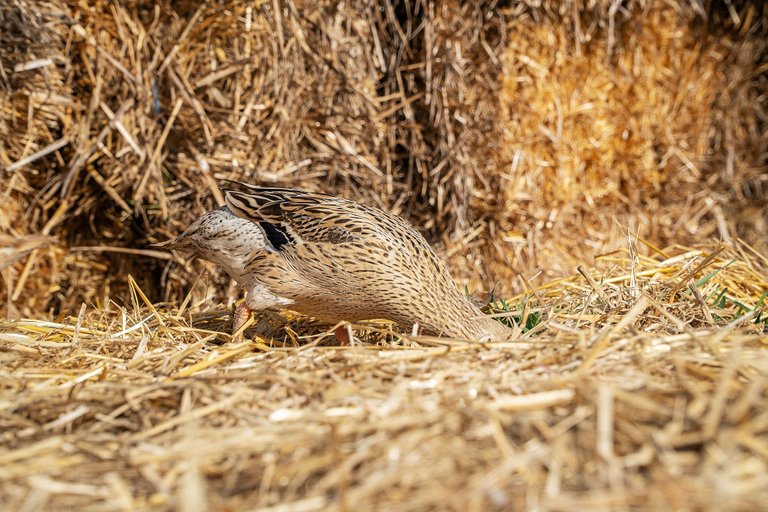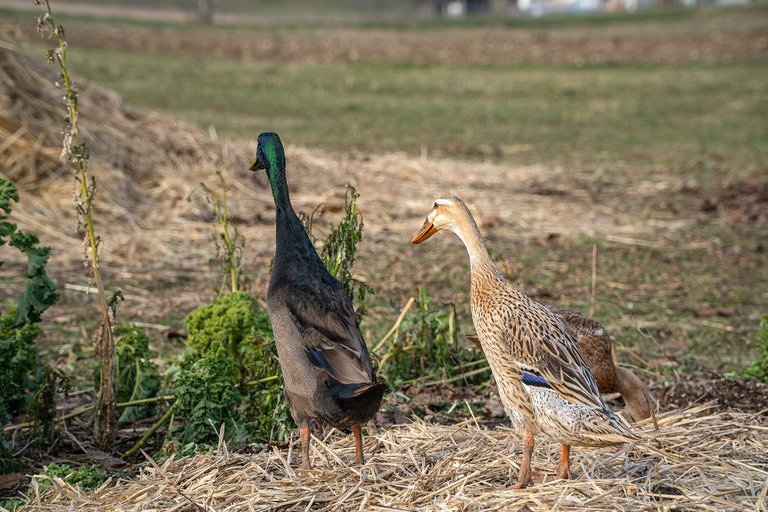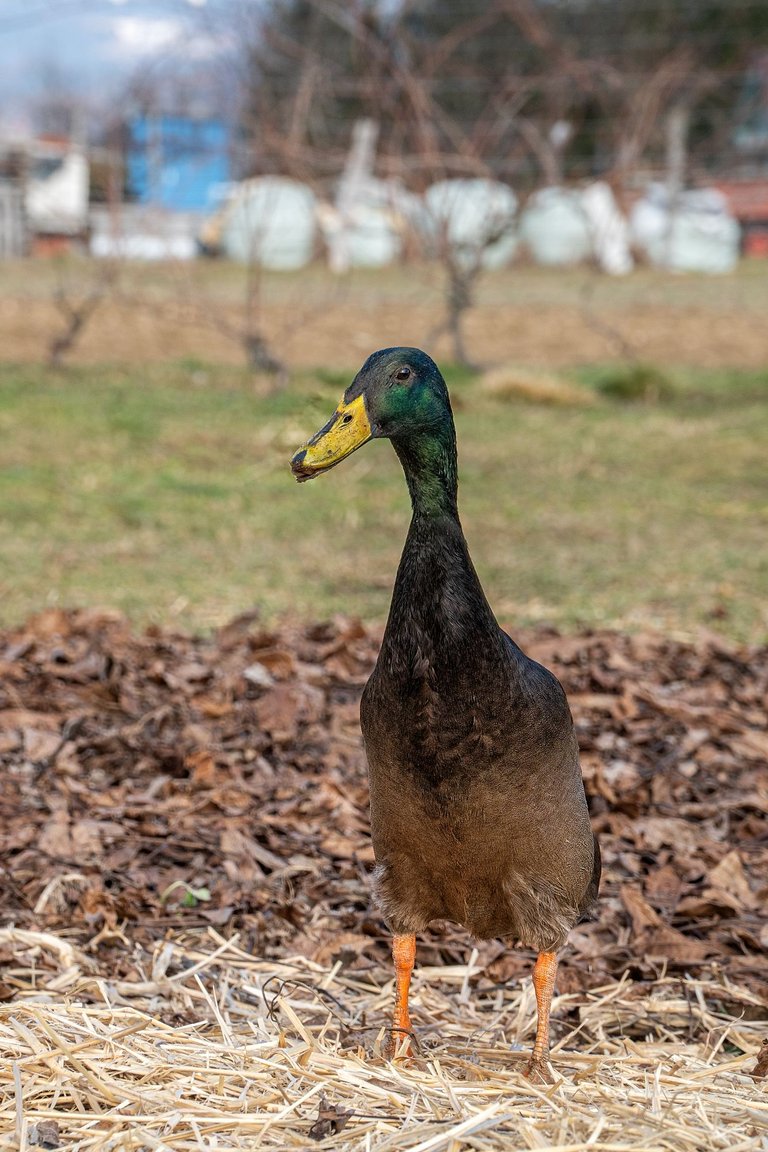Meet my feathery friends
Hello Hive friends, today I would like to introduce to you my little flock. Say hello to Bebbette, Yvette and Oli. These three are something fun to watch whenever I go out. If you have animals at home you know how different they can be by character and I am telling you. It is crazy when you see what is their next move. They always try to reach some more grass. One time at one neighbor, next time at another. Oli is the flock leader but girls know how to turn him around. They can go explore by themselves and Oli is losing it. Damn, these girls, right? However, these are actually Indian runners. The exact origin of Indian Runner ducks is not known, but they are believed to have been developed in the Indian subcontinent, possibly more than 1,000 years ago.

They look just like they dropped the hottest rap album in 2023.

Indian Runner ducks have been used for weed control in rice paddies and other agricultural fields, as they eat insects and other pests that can damage crops.

Indian Runner ducks are a breed of domestic duck that are believed to have originated in the Indian subcontinent. They are a popular breed of duck that are primarily kept for egg production, ornamental purposes, and most important as treatment for snails. We had a lot of snails and in only one season this trio cut them drastically. Indian Runner ducks are known for their tall, slender, upright bodies and their distinctive "runner" posture. They stand up tall, with their bodies held in a vertical position and their heads held high. They are relatively small ducks, with adult males weighing around 0,9-1.5 kilos and females weighing around 0,7-1 kilos.

Always looking for snails and slugs.

Hello, is someone there?

Indian Runner ducks are known for being excellent egg layers, with females capable of laying up to 300 eggs per year. They are also relatively easy to care for and are known for their hardiness and adaptability. They can be kept in a variety of different environments, including backyards, farms, and even urban areas. There is no need to have a pond for them. They are actually the only duck breed that doesn't need it. However, ours have a small pond and the big pond is in the plan for this year. When you see how happy they are with the water feature, you simply get them.



They are very social animals and enjoy being kept in groups. They are known for their friendly and curious disposition and can make great pets.
Indian runners come in a variety of different colors, including black, blue, fawn, white, and chocolate. They have a friendly and curious disposition and can make great pets for those who are willing to care for them properly. There is only one problem. They can be very timid even if you are with them daily and provide them with goodies. Speaking of which...

Indian Runner ducks are omnivores and have varied diets. In the wild, they feed on a variety of insects, small fish, and aquatic plants. When kept as domestic ducks, they can be fed a diet of commercial duck feed, as well as a variety of fresh foods.
Indian Runner ducks enjoy eating green vegetables, such as spinach, lettuce, and kale, as well as other fruits and vegetables like peas, carrots, and berries. They also enjoy grains like corn and wheat, as well as small amounts of protein-rich foods like cooked meat, fish, or scrambled eggs.

Indian Runner ducks are sometimes called "penguin ducks" because of their upright posture and quick, waddling gait.
In one study published in the journal Animal Behaviour, researchers found that male Indian Runner ducks use different vocalizations to communicate with females during courtship. The researchers recorded the vocalizations of male ducks and found that they made a variety of sounds, including whistles, trills, and grunts. They also found that the vocalizations differed depending on the behavior of the female duck, with different sounds being made when the female was receptive to mating versus when she was not.

Always keeping an eye on his /our flock
I hope you are as fascinated by these majestic animals as I am. Thank you for your attention and support. See yo next time with another theme and lovely photography.
https://leofinance.io/threads/@raj808/re-wnfdiary-7srrvj0uhq
The rewards earned on this comment will go directly to the people ( @raj808 ) sharing the post on LeoThreads,LikeTu,dBuzz.
Hi, what is this?